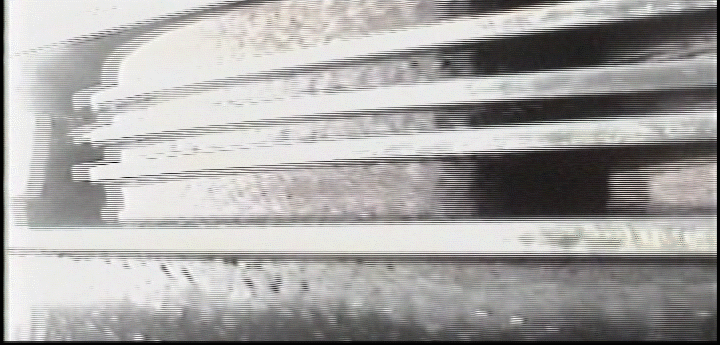The Vintage Filmmaker
(a blog)
by W. A. Painter
My “new” camera - Historic Bell & Howell Filmo
Having worked in the video industry for my career I’ve personally witnessed the steady decline of motion picture film use, and as a vintage history lover that’s a pretty disappointing prospect as I always had a personal desire to work in film.
This year, I decided to do something about it. While doing so, I made a number of discoveries I didn’t know about before. Take the legendary company Bell & Howell for example. If you’re looking to start out in amateur vintage filmmaking look no further than the historic Bell & Howell Filmo 70.
Bell & Howell Filmo 70, the first personal movie camera c. 1924
The development of this personal movie camera is nearly as old as the development of the 1st motion picture cameras used in early Hollywood.
Bell & Howell originally started out servicing early wooden cameras, eventually developing one of their own in 1910. Around the following year, while on an exploration trip to Africa, husband and wife filmmakers Martin and Osa Johnson reported that their B&H wooden camera had been damaged by mildew and eaten by termites. When B&H learned of this they decided to address the problem by developing the 1st all-metal movie camera, the 2709, which not long after just so happened to launch an entire era of Hollywood filmmaking, adopted by the likes of Charlie Chaplin, Mary Pickford, and a host of other players who depended on the 2709’s precision and reliability.
Martin & Osa Johnson with their B&H 2709’s, on their 2nd trip to Africa c. 1930
Charlie Chaplin & Mary Pickford with their 2709’s
With Hollywood success under their belt B&H looked to compete with Kodak to develop a personal movie camera market, and in 1923 manufactured the 1st spring-wound 16mm camera series called the "Filmo 70", allowing access to moviemaking to the public for the 1st time (albeit at first only to the super-wealthy with a cost of $275 per camera or nearly $3,000 today, but still).
Early print ad for the Filmo 70
These first cameras were a sensation in the roaring 20’s and were further refined and developed into extremely reliable “cinemachinery”. How reliable?
As of this year in 2020, I decided to pick up one of these legendary cameras to try it for myself and create a video series documenting the experience. As this first video showcases, I for one was not disappointed. Vintage filmmaking, for me, connects me directly to history. It's something that someone of my generation, at the bridging of two centuries and growing up without film, still has a chance to recapture. Understanding these cameras and how to use them is something I want to continue for the rest of my life and keep the history of vintage filmmaking alive in my own small way.
Subscribe to Andy’s Newsletter and hear more from the man himself!
Delightful stories about our vintage filmmaking journey and the Hollywood history its based on, released every other Sunday.
Where did “Vintage Studios” come from?
For this first blog series…
Since revamping and relaunching this whole Vintage Studios thing, I thought it might be interesting to take a trip down memory lane and tell the story of how VS came to be, and to answer the question “why Vintage in 2020?” Why not ANYTHING else?
In a 21st century work-ourselves-to-death culture, for me, the only surefire path to maintaining any semblance of creative fulfillment, well-being, work-life balance, or sanity in the entertainment industry has meant learning how to say “no” to things that just aren’t you, something creatives don’t do enough of. For me this meant I needed to stop…everything…and ask myself what do I really care about, and where the heck was I headed?
2020 in particular has given many of us reason to pause and reevaluate. I came to the conclusion that I needed to take a chance on what I love, and what I find fulfilling.
Relaunching Vintage Studios, although scary, is so important to me. Looking back, it’s easy to see why.
Chapter 1 - Origins
There’s a lot I strive to be in life, like trying to be a loving father, a good person, a living-history buff, and so on…
But if someone were to ask me how I truly see myself, fundamentally, there’s only one answer - a Filmmaker.
Seeking this identity has been what has driven me since I was a young boy. In this day and age that prospect has proven itself to be elusive and exceedingly challenging. Even the term “filmmaking” in the historic sense has been redefined over and over again.
Life brings challenges our way that are constantly at odds with how we view ourselves, placing our most passionate desires just out of reach, , although there was no way for me to know any of this when I first fell in love with filmmaking.
Although I didn’t know this until later in life, I apparently have Grandpa J.V. Painter to thank for my initial interests in film, in spite of never knowing him as he passed before I was born. Grandpa Painter was many things, but among them he was a photographer and an enormous movie buff. He was known as “that guy you’d hate to watch a movie with” as he would not be able to help himself from critiquing the story like calling out period inaccuracies such as “Oh, they would never do that!” and predicting narrative twists before they happened, overjoyed when he was right exclaiming “See! What did I tell you?”
He took his love of film further with home movies. Although super 8 cameras were common back in the day, producing home movies as prolifically as he did was not. With the many, many films he made documenting his family and the times in which he lived he would instill in my father, Denny Painter, the youngest, a simple notion that “making home movies is important” or to look at it another way “making movies is important”.
Fast forward to the 1980’s when I showed up as the youngest of my siblings, and my father put a great deal of emphasis on home movies and photography for his family as well. Even as a child, the lens of a camera was familiar and within easy access to experiment with. My first experiences in making my own movies were to imitate what I saw in the blockbusters of my upbringing in the 90’s playing them out with action figures and whatever I could find to stand in as set pieces.
Eventually I began to experiment and find my own voice with original concepts. This lead to my first “film company” (I put in VERY generous air quotes) that I named “Special Entertainment”. Why Special Entertainment?
Growing up in the small town of Lantana, FLA I had a pretty unique childhood. For one thing I was surrounded by old working antiques such as wind up victrolas, tube radios, antique pianos, and so forth. Everyday as I woke up and looked out my bedroom window I would inevitably see parked on the front driveway a rusty, vintage 1940 Buick Special Straight 8, chrome glistening in the sun.
This was in fact the first car that my Dad ever purchased. He had a paper route and noticed the old car in the back yard of one his neighbors, an older fellow. He decided to stop and ask him if he wanted to sell it. Not knowing the car’s worth he asked the old man if he’d take $100 for it. He replied “Oh, I might” covering his face to hide his knowing grin.
Apparently, even in the late 1960’s $100 for this particular 40 Buick was a deal - for the seller.
Since he was only 15 and couldn’t legally drive, Grandpa Painter had to drive it home for him. Dad said this was one of the rare opportunities he and his old man could bond, as Grandpa Painter liked the old car too.
Once home dad got straight to work breaking down the car, as he loved taking things apart and fixing them again - or at least, tearing them apart.
Indeed every car he ever bought was a project car, of which he grew a small collection, including a 55 Buick, my mom’s blue 66 Mustang and a pair of 51 Mercuries, one of which actually ran.
In fact, yours truly was brought home from the hospital in the running 1951 Mercury.
As a boy I became intimately familiar of my dad’s old car crawling in and around that thing, noticing and appreciating little details.
I don’t know what it was, but I really liked the way the word “SPECIAL” read as apart of the side trim design of the split hood. I liked it so much I wound up grabbing my dad’s (practically my) video camera and shot take after take of the word sliding into view of the camera, the light gleaming off the weathered, textured lettering.
I brought the footage into a brand new computer-based AV editing software called “Adobe Premiere” that had only recently arrived for home use a couple years earlier in the mid 90’s, and with it created a logo animation that, to this day, is completely and totally - laughable.
But the seed had been planted. That dreamy-eyed, naive kid had an idea for a vintage-based movie company that stuck with him and never went away.
It was always my dad’s plan to restore that car to its pristine glory, and only naturally, he wanted to work on it with his son. Sadly, that never happened. In high school I was into making videos on my computer, not lying on my back working with grease-covered hands on old cars.
I was a senior in high school where I guess my dad came to the realization that this project car was never going to be finished. Not wishing to see the car continue to deteriorate further in the tropical Fla climate, he made the painstaking decision to sell it, in hopes new owners would have the time to restore it.
To this day, I have no idea what happened to that car and I feel pretty sad thinking about how I never helped my dad work on it, wasting the opportunity I had.
This would not be the only vintage relic I was exposed to as I grew up, but it’s the one that sticks with me the most as something I took for granted that would always be there for a source of inspiration, until one day when I saw it loaded onto a trailer, my dad kiss it goodbye, and vanish down the street.
Years later, I still use the same image of the rectangular badge and chrome trim from my Dad’s Buick Special as the basis for my logo today. I would also find that the vintage of the 1940’s, the golden era of studio filmmaking, was the stylistic era I loved the most and have infused into my branding wherever possible.
It sounds cliche, but I really do hope to find that car again someday. But for now, its details live on in photos and in my memory - everyday of my life.
1st “Vintage Studio Productions” logo c. 2000’s
Vintage Studios logo c. 2010’s









